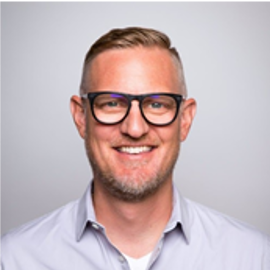7 DE-ESCALATION TIPS FOR PRIVATE SECURITY
Chris Anderson, Silvertrac Software, CALSAGA Network Partner
Keeping people and property protected is the most important service that private security provides.
In any tense situation where there’s potential for violence, de-escalation needs to be the priority, not just one of many options. To make sure this happens, your entire security operation needs to be on the same page about how to respond to and de-escalate tense situations.
This article will cover some basic strategies your security guards can use to keep tense situations calm and prevent violence or injury.
- Escalation Warning Signs
- Steps to De-Escalation
- What Not to Do in Threatening Situations
Once you start implementing these strategies in your operation, training your officers on them should be the highest priority. Well-trained guards, supervisors, and managers will be able to better execute de-escalation strategies.
Escalation Warning Signs
In the private security industry, there’s a good chance your security guards will be in potentially dangerous situations. That’s why having strong situational awareness is incredibly important.
Here are some of the most common warning signs that a person might escalate a situation in the field:
- Direct threats
- Bragging about previous violent encounters
- Yelling
- Extensive profanity
- Violating security guard’s personal space
- Finger pointing
- Heavy breathing/flaring nostrils
- Making fists
These are the most obvious signs that a situation could escalate. But there are less obvious signs that are just as common:
- Higher tone of voice
- Laughter at odd/inappropriate times
- Refusing to make eye contact
- Tensing body
Making sure that your security guards who work in the field are aware of these warning signs. It will make dealing with dangerous situations that much easier.
7 Steps to De-Escalate Situations
Staying calm in a potentially threatening or dangerous situation is a lot easier said than done. It’s completely normal for security guards to want to fight fire with fire and stand their ground.
But this is only going to make the situation worse. If a guard responds aggressively, the person they’re dealing with will want to respond even more aggressively back.
These 7 steps will help any security operation be better equipped to handle sticky situations and keep everyone safe.
1. Prepare
Having a plan for your security teams to follow in threatening situations has a lot of benefits. Following a plan can minimize mistakes, give officers confidence, and keep them calm. Using past situations to help develop your plans will make them even better
Things to consider in these plans include knowing when to call for backup, when using physical force should be considered, and how to communicate. Once you have a solid plan in place, make sure all security officers are trained well to implement that plan.
2. Understand
Whether a security officer is trying to remove a homeless loiterer, a violent criminal, or an aggressive soccer mom, it’s important to look past the person’s actions. Looking at everyone as people first – even in tense situations – will make them feel like someone actually wants to help them.
If anything an officer says or does comes off as judgmental, the person they are trying to calm down will see the situation as a struggle instead of an attempt to find a solution. If the officer’s goal is to keep everyone calm, escalation is a lot less likely.
3. Listen
The #1 rule for listening is to not interrupt. But it’s more than just letting an angry person rant and yell. People need to feel like they’re actually being heard. Security guards dealing with an angry person should practice active listening.
Maintaining eye contact will keep guards focused and show the person that someone is paying attention to them.
Repeating what they say back to them makes sure the security guard knows what the person is trying to say, not just guessing.
4. Communicate
Communication is not just about the words you say. Studies show that communication is only 7% verbal. The rest comes down to how things are said and body language.
Your security guards need to pay attention to every aspect of how they communicate. Doing things like keeping a calm tone of voice or standing further back will communicate that the security guard is not a threat and wants to help.
When asking questions, giving people plenty of time to respond can make a huge difference. Not only will the security guard be practicing patience and keeping calm, the problem person won’t feel rushed.
5. Collaborate
Even the most aggressive or threatening person is more likely to respond better when they feel like someone is genuinely trying to help them. Again, an officer’s main priority should be peacefully resolving the situation, not using force.
Using phrases like “let’s figure out how we can fix this problem together” shows that the officer is willing to work with the person. Asking questions to better understand why the person is mad in the first place can help the officer come up with the best solution.
Offering solutions to the problem based on what the person has said shows the security officer is actually trying to help or mitigate the situation.
6. Document
Documenting a problem interaction can make all the difference. If the situation turns violent, having documentation can help later on in potential lawsuits or interactions with law enforcement.
Using a guard management software like Silvertrac will allow security guards to record audio, take notes, and take pictures to make sure the entire story gets told.
To keep the situation calm, it’s always best to ask or inform the problem person that they will be recorded. If they start to escalate in response, taking notes and/or making sure backup is nearby are good alternatives.
7. Debrief
Talking about tense situations as a team is super important. Getting feedback from guards in the field can help update and improve de-escalation preparedness in the future.
This is a great time to get more buy-in from your security guards since they will get to play a part in developing strategy.
What Not To Do
Knowing what not to do in potentially threatening situations is also important. Here are a few tips of things to avoid when dealing with an escalating situation.
- Don’t make false promises. Promises, in general, are probably better to avoid.
- Don’t interrupt. This is so important it’s in here twice. Interruption is one of the quickest ways to start escalating an already tense situation.
- Don’t make any type of threat. Again, the goal is to resolve the situation without violence. Threats make that less likely.
- Don’t show visible frustration. The problem person will respond better to an already calm security officer.
- Don’t say stereotypical lines like “calm down” or “just breathe.” These phrases can actually cause a negative response and make the situation worse.
One Last Word
These are great tips for trying to keep situations calm and people safe. But we know this won’t prevent every bad situation from getting out of hand.
Violent and tense situations are inevitable in the private security industry. Having a good grasp on every strategy and option will help security teams have the best response in any situation. Knowing how to respond appropriately will keep your security guards safe and your clients happy.

 Anne Laguzza is the CEO of The Works Consulting. As a seasoned business executive with human resources management, leadership development, and performance coaching experience, Anne works with clients from a variety of industries to develop better systems, maximize employee productivity, and enable management to focus on business growth.
Anne Laguzza is the CEO of The Works Consulting. As a seasoned business executive with human resources management, leadership development, and performance coaching experience, Anne works with clients from a variety of industries to develop better systems, maximize employee productivity, and enable management to focus on business growth. Mark was named to the prestigious IFSEC Global influencers list in 2018 & 2019 for “Security Thought Leadership”. He is also a highly active international security figure, member of ASIS and a Fellow of the UK Security Institute, as well as a world renown data-driven Operations & Security leadership expert. Mark is based in Montreal, Canada with TrackTiK, a dynamic and cutting edge tech company. Mark is also a lecturer and commentator on global security issues.
Mark was named to the prestigious IFSEC Global influencers list in 2018 & 2019 for “Security Thought Leadership”. He is also a highly active international security figure, member of ASIS and a Fellow of the UK Security Institute, as well as a world renown data-driven Operations & Security leadership expert. Mark is based in Montreal, Canada with TrackTiK, a dynamic and cutting edge tech company. Mark is also a lecturer and commentator on global security issues. As we enter a new decade, it’s fun to reflect on how hiring has changed over the past 10 years.
As we enter a new decade, it’s fun to reflect on how hiring has changed over the past 10 years.
 Shaun Kelly joined Tolman & Wiker Insurance Services in 2005. He specializes in all lines of property and casualty insurance for industries including contract security firms, agriculture, construction, oil and gas. Shaun received a BS in Business Administration with a major in Finance from California State University in Fresno, California. He is an active member of several industry associations, including the Association CALSAGA, the Kern County Builders Exchange and the Independent Insurance Agents of Kern County. Shaun can be reached at 661-616-4700 or skelly@tolmanandwiker.com.
Shaun Kelly joined Tolman & Wiker Insurance Services in 2005. He specializes in all lines of property and casualty insurance for industries including contract security firms, agriculture, construction, oil and gas. Shaun received a BS in Business Administration with a major in Finance from California State University in Fresno, California. He is an active member of several industry associations, including the Association CALSAGA, the Kern County Builders Exchange and the Independent Insurance Agents of Kern County. Shaun can be reached at 661-616-4700 or skelly@tolmanandwiker.com.